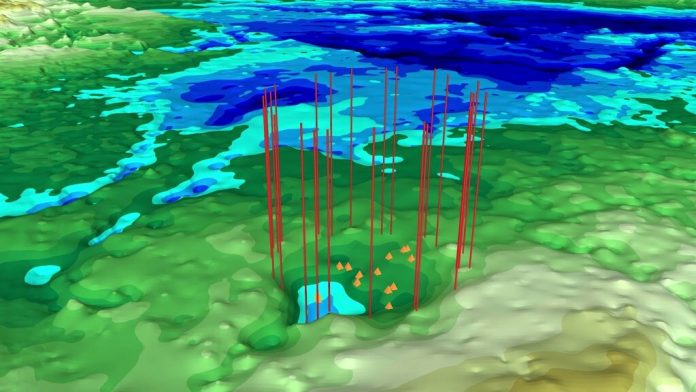A second enormous crater that appears to have formed when a meteorite smashed into the Earth has been discovered underneath Greenland’s ice.
Buried around a mile underneath Greenland’s ice sheets, it is even larger than the site beneath Hiawatha Glacier revealed to the world in November.
A team including Nasa scientists came across this second impact site after studying radar images mapping the region’s bedrock.
At 22 miles wide, the crater ranks among the largest ever found on Earth, and is comparable with impacts known to have triggered global climate change and extinctions.
“We’ve surveyed the Earth in many different ways, from land, air and space – it’s exciting that discoveries like these are still possible,” said Dr Joe MacGregor, a Nasa glaciologist who contributed to the discovery of both Greenland craters.
The only other circular structure that the scientists think could have caused a crater of this size would be a collapsed volcano – but the closest known areas of volcanic activity are hundreds of miles away.
If they can confirm the structure is the result of a meteorite impact, it would be the 22nd largest impact crater ever found on this planet.
Past research has revealed profound consequences for life on Earth when large meteorites hit – the most famous example being the Chicxulub impact linked to the extinction of the dinosaurs.
When the first impact site was discovered, the scientists said they intended to accurately date the site in order to understand when and how it affected the planet.
Based on the undisturbed ice in the area, the team said the more recently identified crater is probably more than 79,000 years old.
While the impact craters in Greenland were discovered only 114 miles apart, the scientists think they probably did not form at the same time.
“The ice layers above this second crater are unambiguously older than those above Hiawatha, and the second crater is about twice as eroded,” explained Dr MacGregor.
The discovery of these craters has come as a surprise to scientists, who long assumed most evidence of ancient impacts would have been wiped out by erosion as years passed.













